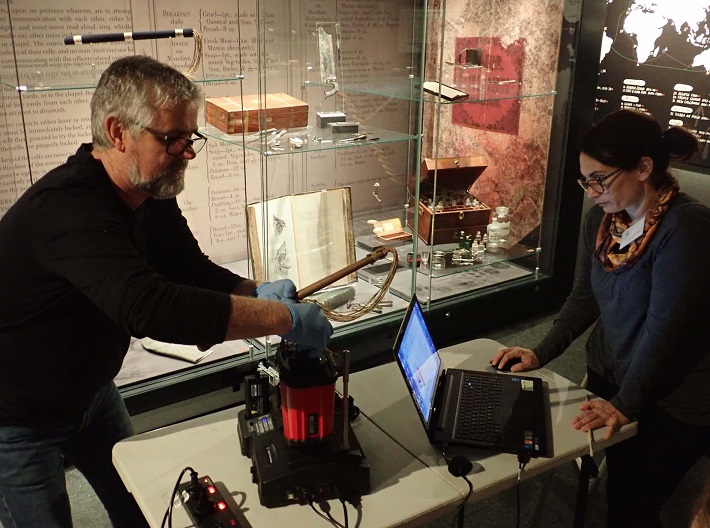The cat-o'-nine tails (multi-tailed leather whips) have been in the Port Arthur Historic Site Management Authority's collection for years, and staff had always assumed that they had not seen active penal service. The arrival of the UNE team and its high-tech fourier-transform infrared (FTIR) spectroscope provided the perfect opportunity to resolve the matter once and for all.
Analysis of the flogging equipment detected no traces of collagen or blood, which would have been expected - even in minute traces - had the whips been used for their intended purpose against convicts. Now it's thought they may be a hangover from early tourism rather than convict days.
"In the absence of residues, and given the authenticity of the wear patterns, we're starting to speculate that one of the whips may have been used by our early guides for demonstrating convict lashings," said Michael Smith, from the Port Arthur Historic Site Management Authority.
The UNE team is contributing to a wider study of the archaeology of the Tasman Peninsula to develop a picture of the lives and work experiences of convicts. Project leader Professor Martin Gibbs said while the FTIR gear is invaluable for research, it can also come in very handy solving historical puzzles such as this.


